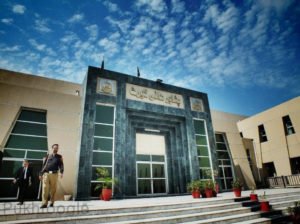Although a lot of traditional sweets and home- breads that used to be served to relatives and guests on festive occasions have been replaced by market delights, yet Waishaly, a delicious home-bread, is still survived with its different versions in Khyber Pakhtunkhwa being served to guests during Eid days.
The special delight is still popular in north, south and tribal districts of Khyber Pakhtunkhwa and is cooked in homes by women with different things added to it to make it more delicious for the guests.
The cooking of Waishaly is not only easy but also very simple. The recipe includes flour, eggs, milk, aniseed, desi ghee and crushed dry fruits. A thin paste is prepared by mixing all the ingredients and then it is put on Tawa, a circular griddle pan already greased with oil. The cook then makes patterns with fingertips on the bread and after it gets roasted, removes it and places on an open plate, ready for serving to guests with or without black tea.
Waishaly is popular in tribal districts
“Waishaly has several versions in different parts of the province but basic method of its cooking is the same.
“The term ‘Waishaly’ is derived from the Pashto root word ‘Waish’ which means to distribute and the addition of ‘ly’ at its end means something that is supposed to be distrusted among family members, children, relatives, friends and guests,” he said.
Khalo Bibi, 65, a housewife hailing from Shangla district currently living in Peshawar, told this scribe that Waishaly was still cooked on the first day of Eidul Azha and served to guests with black tea. She said that vermicelli couldn’t compete with the natural taste of traditional Waishaly as it contained different natural flavours.
“The very smell of Waishaly maddens one when a woman puts its thin paste on the griddle pan. Children come running to gather around their mother in the kitchen to get its tasty bite,” she said.
Elman Ahmad, a resident of Kumbar village in Dir, said that in addition to sweets, dry fruits and beverages, Waishaly was also served to guests on Eid. At times, first milk of buffalo or cow, if available, was also mixed in the composition of the home- bread.
“On the first day of Eid, when people exchange greetings, offering sweets and tea to guests also carries great significance.
“The breakfast on Eid day with one’s own family members lends an extra excitement to the rare occasion. Waishaly glues families with its taste and delicacy,” he said.
Beenash Khan, 35, a resident of Charsadda, said that on Eidul Azha most people remained busy to cook varieties of spicy dishes from sacrificial meat and didn’t have much time to enjoy sweets or home-breads. She added that she had learnt cooking Waishaly from her grandmother years ago and still cooked it on Eid.
“Not to serve to guests, but my children love to eat Waishalay and necessarily on Eid and also in routine, I cook Waishaly for the sake of change. As obvious from its very name, how people in the past would share and care especially on the happy occasions,” she added.
Published in Dawn, August 22nd, 2018







